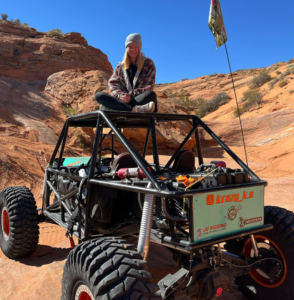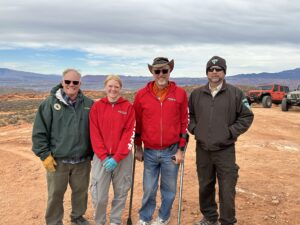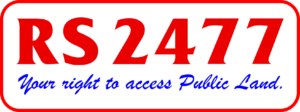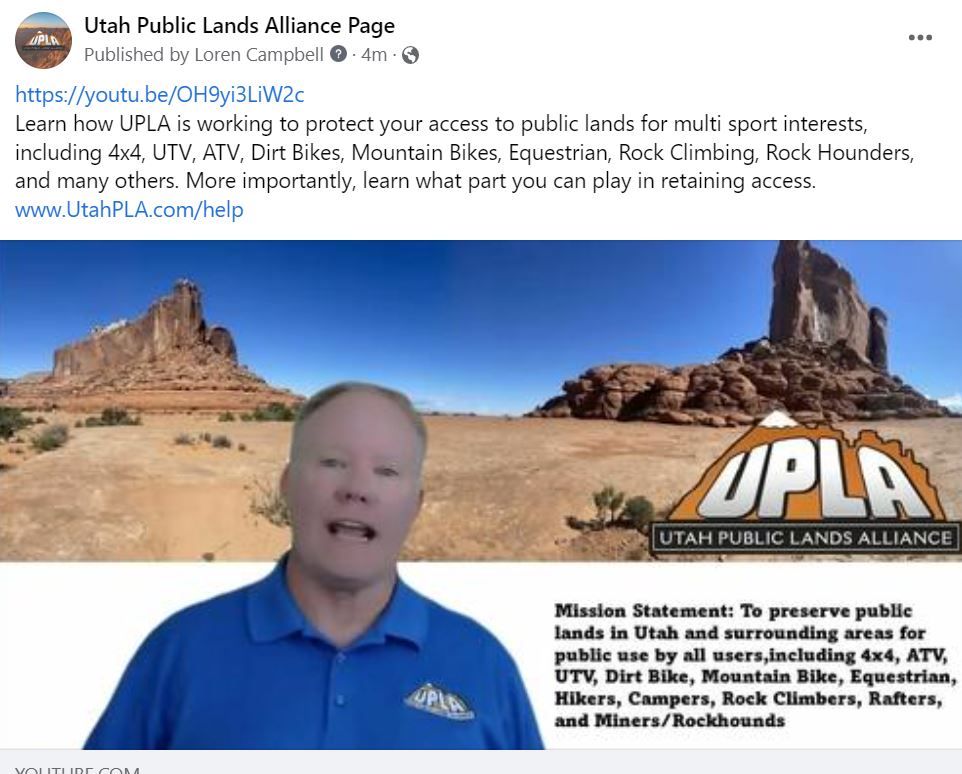Emergency Communications-What’s Your Plan?
 Every public land user has thought at one time or another how to get help if you had an emergency situation and needed to get help. We just had a friend from California go up for a few days to Death Valley, alone, He was supposed to have met a friend in Beatty last night and he no showed, so yesterday they called the Ranger in the area who found him. He ran into a flash flood and his vehicle got really stuck in the mud up to the frame. He was in good shape after being stuck for 3 days with plenty of water and food, but needed help to get the truck out before more rains come through the wash he’s in. A crew of 3 rigs is heading down to St George to get him out, but without the Ranger locating him the rescue would have been much more difficult.
Every public land user has thought at one time or another how to get help if you had an emergency situation and needed to get help. We just had a friend from California go up for a few days to Death Valley, alone, He was supposed to have met a friend in Beatty last night and he no showed, so yesterday they called the Ranger in the area who found him. He ran into a flash flood and his vehicle got really stuck in the mud up to the frame. He was in good shape after being stuck for 3 days with plenty of water and food, but needed help to get the truck out before more rains come through the wash he’s in. A crew of 3 rigs is heading down to St George to get him out, but without the Ranger locating him the rescue would have been much more difficult.
Think about your communications strategy before you head out. Here’s a few tips to consider from worst to best options.
CB Radios are decent for communicating in a small group, but as far as trying to ask for help, you’re out of luck.
Race Radios (Private land Mobile Radio-PLMR) mobile mounted radios with a vehicle mounted antenna work pretty well, often out 25-50 miles, but you have to have someone monitoring the frequency you are using to be able to relay your request for help. Handheld Race Radios are pretty much worthless for any range.
GMRS Radios that are mobile mounted in a vehicle with a good external antenna also have the same range as Race Radios, and there are GMRS repeaters, but I’m not certain how many there are or exactly how they work yet.
Ham Radios that
are mobile mounted with a good antenna can often get out 75-100 miles with line of sight. There are repeaters in many locations that you can talk through, and often some of the repeater channels are monitored by Ham Operators who will be glad to relay messages for Emergency Assistance. To be able to use the repeater system, you first have to know what repeaters are in the areas you’re traveling in, and you need to program the channel into your radio along with the proper offset and Code. Ham has always been a good emergency service as long as there’s a monitored repeater near you.
Personal Locator Beacons (PLB) are a great option for signaling for help. There is a wide range of capability for each device, some only send out an SOS with your location, others feature satellite messaging to provide more details. You need to register with all your information once every 2 years, including your emergency contacts. Registration is free and can be done at www.beaconregistration.noaa.gov. If you’re going to use PLB SOS for emergencies, you should be aware that activating it will notify Search and Rescue to come to your aid, but they will have little information about what kind of help you need. Depending on where you are, you may incur substantial costs for SAR to respond.
Satellite messengers also have the SOS feature, but allow 2 way communications with authorities over Iridium and Globalstar satell
ites. They require some type of subscription service.
Iphone 14 just introduced the capability of Emergency Text Messaging via Satellite. I have listed this last because I think this may be the best way to get the help you need. This feature is available on all Iphone 14 models, and is included free for 2 years when you buy a phone. The system works over the Globalstar Satellite network, and Apple maintains their own Emergency Center to respond and dispatch help. The SOS feature on the phone will automatically transmit over cellular if you have it, or will switch to Satellite mode and help you locate the best position for Satellite reception. My tests have only taken a few seconds to lock onto a satellite. One great feature of the system is that you have the option of also including your emergency contacts in the chat, so everyone receives real time updates of all communications between you and the Emergency Center. Best of all, you are very likely to have the only tool with you whenever you need it, and it’s really easy to use. The system is designed to even work in with the Crash Detection of the Iphone, even in many cases if you’re inside the vehicle. As with any communications, there are some limitations with things that might block signals such as mountains, tall buildings, or deep canyons.
Another handy thing is that you can share your location (without messaging) to let loved ones know where you are, without it being an emergency. Here’s a great video that explains the features…
One thing for sure, the time for planning what you’re going to do in an emergency is not when you have an emergency. Figure out the plan that works best for you and to discuss it with your friends and family.
 H.B. 0180, the Off Road Vehicle Safety Education act, was passed in the 2022 Legislative Session with an effective date of January 1, 2023. Enforccement will not begin until February 1, 2023. This article is to summarize the interview with Chase Pili, the DNR OHV Program Director, and Kevin Mortensen from Ride Utah. The full video can be watched at
H.B. 0180, the Off Road Vehicle Safety Education act, was passed in the 2022 Legislative Session with an effective date of January 1, 2023. Enforccement will not begin until February 1, 2023. This article is to summarize the interview with Chase Pili, the DNR OHV Program Director, and Kevin Mortensen from Ride Utah. The full video can be watched at 

 What is R.S, 2477? RS 2477 is a federal law that authorized construction of roads across federal public lands that was passed in 1866. It helped settle the West for 110 years. Residents of Utah, visitors, pioneers, and settlers created and used thousands of roads across public lands for farming, ranching, hunting, recreating, mining, and connecting communities. We continue to use many of these routes daily and some occasionally or seasonally.
What is R.S, 2477? RS 2477 is a federal law that authorized construction of roads across federal public lands that was passed in 1866. It helped settle the West for 110 years. Residents of Utah, visitors, pioneers, and settlers created and used thousands of roads across public lands for farming, ranching, hunting, recreating, mining, and connecting communities. We continue to use many of these routes daily and some occasionally or seasonally.
